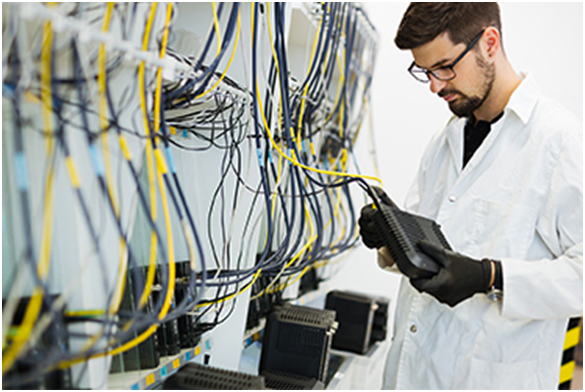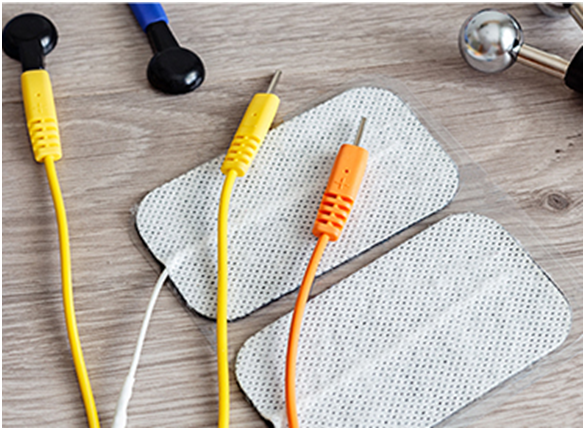The Value of Medical Cables for Healthcare Equipment
The Value of Medical Cables for Healthcare Equipment
At Winfox Cable Solution, we take pride in providing our customers with the finest quality custom manufactured medical wire and cable.
Medical cables have various value to applications, and they are mainly designed to transmitting the signal/data to medical equipment and laboratory instruments. In the medical industries, any possibility of failure cannot be allowed by personnel, because the safety of patients may be threatened if the medical equipment has malfunctioned, such as a delay in start-up and other problems. To reduce the risk of medical care, it is important to have the right wires and cables for getting the best value and performance of medical equipment.
In this article, we mention introducing what medical cables are and tell you how to choose the right wire and cable, so that makes you understand the value of medical cables step by step.
What's Different Between Medical Cables and Generic Cables?
To protect the health and safety of patients, we don't recommend the use of standard/generic wires and cables in the medical equipment, unless the applications don't have to meet any Special hygiene demand.
As same as the structure of generic cables used in other industries, medical cables are composed of individual wires that are bundled into a unit with a connector at least at one end. However, due to special requirements, including lumens, biocompatibility, and multiple autoclaving procedures, medical cables must be given the features of lower surface friction, mechanical durability, noodles-like flexibility, and has certain resistance for high-temperature and sterilization.

Besides, medical cables must comply with specific safety specifications and regulations, such as EN ISO 10993-1 biomedical standard and FDA 21 CFR 820.30 medical certification, etc. In the manufacturing processing, to ensure that medical equipment can always operate correctly, manufacturers must take more care when manufacturing cable assemblies for medical and healthcare applications. Manufacturers usually deploy detailed inspection procedures at various stages, such as electrical testing to reduce the probability of damage to the medical cable caused by the wiring configuration and intermittent connections.
Understanding the Applications of Medical Cables.
At present, medical cables have gained wide practicability in the medical and healthcare industry. They are used in various medical equipment, applications include ECG/ EKG patient cables, MRI imaging, SPO2, endoscope system, electrosurgical instruments, and so on, even to provide lighting for the equipment. For different medical purposes and environments, many medical cables will be made into disposable products. WinFax Cable Solution provides various standard and customized medical cables, sizes, and materials to meet the medical personnels' highest performance needs.
Aesthetic Medicine
In the application of aesthetic medicine, medical cables are often used in medical equipment such as HIFU, RF, microwave, liposuction, and other medical technologies, etc. These medical devices often have requirements for complex conveying technology and process monitoring. In addition, these medical cables for plastic surgery usually adopt ergonomic and beautiful packaging, and some of the medical cables have will be equipped with an applicator that can be quickly replaced.
Defibrillation Setting
Medical cables used in defibrillators, such as AED or S-ICD, must at least comply with EN ISO 13485 medical quality certification and even need to comply with other biomedical relevant specifications. In order to provide valuable protection for patients, cables used in defibrillation devices usually required extensive braiding techniques and good low-signal transmission capabilities.
Surgical Application
Due to the application of surgery operation, the medical cables usually be made into disposable products and sterile grade. Also, they required to achieve cost-effective risk management.
Medical Projection
In modern technology, medical projection provides a lot of convenience for medicine and healthcare, such as diagnosis, surgery, treatment, etc. To improve image quality economically for X-ray, MRI, PET, CT scan, and other technologies, the cables used in medical projection are designed for giving equipment reliable connection and transmission.
RMinimally invasive surgery
It is essential that choosing the right medical cables for minimally invasive surgical procedures. Medical cables used in endoscopes surgery are usually made of optical fibers and fiber materials. These cables must promote the transmission of high-quality images in iterations and ensure consistent quality every time after multiple sterilization cycles.
Lighting Devices
Hospitals select adjustable professional lighting technology according to the different requirements of applications. For example, the personnel needs strong light to read patient charts, inject intravenous fluids to the patients, and so on. Medical cables for lighting devices usually have a wide range of designs, and they are usually used in retaining devices to apply for the best operating of all healthcare applications.
How to Choose the Right Medical Cable for You?
Because of much medical equipment used cables and wire assemblies, cable manufacturers start to provide unique solutions and customized services for any medical needs. However, before finally placing an order for a large number of cables, you also can ask the manufacturer for a cable sample that you want to meet your requirements as a reference. At here, we will help you choose the right one by understanding the key knowledge of medical cables.

When selecting cables for machines or systems for medical applications, It is important to consider the material of the cable components. No matter what kind of medical cable application you want to see, they must maintain reliability and durability. Basically, medical cables are composed of three main components: conductor, wire insulation, and jacket.
Conductor
The conductor is usually made of gold, copper, or aluminum as the internal metal to transmit electrical signals to the device. Choosing the different braiding types of conductors influence directly the softness and fracture resistance of the cable.
Insulation
It is important for cables that the function of wire insulations are to prevent the mutual interference of multiple cables between equipment and equipment. The most common insulating materials used in medical equipment cables include polypropylene, polyethylene, and semi-rigid PVC.
Jacket
In medical equipment, it is important to choose a suitable jacket for cables. Their role is to protect internal components during use and dismantling. All jackets used for medical cables must comply with strict medical regulations.
The following are common-use materials of cables in the healthcare and medical industry. You can choose the different material according to the application and environment.
TPE
Due to the feature of high chemical resistance, it is the most commonly used material by medical cables.
TPU
TPU features strong and durable, but has low heat resistance. so it's incompatible with autoclaves.
PVC
The most benefit of PVC is its affordable price, but not suitable for autoclaving or other cleaning methods. They are usually used for a disposable commodity.
Silicone
Because its advantages of a lightweight, good flexibility, and the ability to withstand multiple autoclaving cycles, this material is most recommended for medical cables.
Winfox is a cable manufacturer for providing high-quality standard and customized wires. Those cables are contributed to avoiding costly complications and delays caused by an ultimately incompatible or inferior product.
With a wealth of experience and expertise, Winfox offers a complete range of conductor cores, including nickel, nickel alloy, high-strength copper, and copper-plated materials for your reference. Besides, the medical cables with high-performance insulation are allowed to customize production by Winfox, which can withstand operating temperatures from -100C to +260C. For special applications, such as resistance to chemical corrosion and radiation, you also can get help from Winfox's knowledge related to high-performance thermoplastic insulation.

Contact us immediately, to find out how Winfox can manufacture the custom medical wire that you require.



